A New Type of Haze? The December 2015 Purple (Magenta) Haze Event in Nanjing, China
Abstract
:1. Introduction
2. Observation and Analysis
2.1. Observation Sites and Data
2.2. Trajectory Analysis
2.3. Satellite Image
3. Results
3.1. Pollution Features and Meteorological Elements
3.2. The Mixing Boundary Layer Features
3.3. Regional Transport Process
4. Questions, Possibilities and Discussion
5. Conclusions
Acknowledgments
Author Contributions
Conflicts of Interest
References
- Burger, J.W.; Pienaar, J.J.; Fourie, L.; Jordaan, J.H.L.; Brebbia, C.A. Identification and quantification of volatile organic compounds in the Cape Town brown haze. Air Pollut. 2004, 74. [Google Scholar] [CrossRef]
- Charlson, R.J.; Ahlquist, N.C. Brown haze: NO2 or aerosol? Atmos. Environ. 1969, 3, 653–656. [Google Scholar] [CrossRef]
- Horvath, H. On the brown colour of atmospheric haze. Atmos. Environ. 1971, 5, 333–344. [Google Scholar] [CrossRef]
- Jacobson, M.Z. Atmospheric Pollution Pistory, Science, and Regulation; Cambridge University Press: New York, NY, USA, 2002. [Google Scholar]
- Jacobson, M.Z. Air Pollution and Global Warming History, Science, and Solutions; Cambridge University Press: New York, NY, USA, 2012. [Google Scholar]
- Sloane, C.S. Contribution of NO2 and soot to the discoloration of urban skies. Atmos. Environ. (1967) 1988, 22, 2021–2031. [Google Scholar] [CrossRef]
- Deluisi, J.J.; Bonelli, J.E.; Shelden, C.E. Spectral absorption of solar radiation by the denver brown (pollution) cloud. Atmos. Environ. 1977, 11, 829–836. [Google Scholar] [CrossRef]
- Huang, L.; Yuan, C.-S.; Wang, G.; Wang, K. Chemical characteristics and source apportionment of PM10 during a brown haze episode in Harbin, China. Particuology 2011, 9, 32–38. [Google Scholar] [CrossRef]
- Senaratne, I.; Shooter, D. Elemental composition in source identification of brown haze in Auckland, New Zealand. Atmos. Environ. 2004, 38, 3049–3059. [Google Scholar] [CrossRef]
- Ferman, M.A.; Wolff, G.T.; Kelly, N.A. An assessment of the gaseous pollutants and meteorological conditions associated with Denver’s brown cloud. J. Environ. Sci. Health Part A Environ. Sci. Eng. 1981, 16, 315–339. [Google Scholar] [CrossRef]
- Groblicki, P.J.; Wolff, G.T.; Countess, R.J. Visibility-reducing species in the denver “brown cloud”—I. Relationships between extinction and chemical composition. Atmos. Environ. 1981, 15, 2473–2484. [Google Scholar] [CrossRef]
- Waggoner, A.P.; Weiss, R.E.; Ahlquist, N.C. The color of denver haze. Atmos. Environ. (1967) 1983, 17, 2081–2086. [Google Scholar] [CrossRef]
- Megaw, W.J. Thin layer brown haze. J. Aerosol Sci. 1977, 8, 21–29. [Google Scholar] [CrossRef]
- Malm, W.C. Introduction to Visibility. Fort Collins, CO: Cooperative Institute for Research in the Atmosphere, NPS Visibility Program; Colorado State University: Fort Collins, CO, USA, 1999. [Google Scholar]
- Malm, W.C. Visibility, the Seeing of Near and Distant Landscape Features. Fort Collins, CO: Cooperative Institute for Research in the Atmosphere, NPS Visibility Program; Colorado State University: Fort Collins, CO, USA, 2016. [Google Scholar]
- Zhang, R.; Wang, L.; Khalizov, A.F.; Zhao, J.; Zheng, J.; McGraw, R.L.; Molina, L.T. Formation of nanoparticles of blue haze enhanced by anthropogenic pollution. Proc. Natl. Acad. Sci. USA 2009, 106, 17650–17654. [Google Scholar] [CrossRef] [PubMed]
- Purple Haze: Lilac Sky at Night Highlights China’s Smog Blight. Available online: http://www.theguardian.com/world/2015/dec/23/purple-haze-lilac-sky-night-highlights-china-smog-blight (accessed on 23 December 2015).
- Fleming, Z.; Monks, P.; Manning, A. Review: Untangling the influence of air-mass history in interpreting observed atmospheric composition. Atmos. Res. 2012, 104–105, 1–39. [Google Scholar] [CrossRef]
- Zhao, M.; Huang, Z.; Qiao, T.; Zhang, Y.; Xiu, G.; Yu, J. Chemical characterization, the transport pathways and potential sources of PM2.5 in Shanghai: Seasonal variations. Atmos. Res. 2015, 158–159, 66–78. [Google Scholar] [CrossRef]
- Deng, J.; Wang, T.; Jiang, Z.; Xie, M.; Zhang, R.; Huang, X.; Zhu, J. Characterization of visibility and its affecting factors over Nanjing, China. Atmos. Res. 2011, 101, 681–691. [Google Scholar] [CrossRef]
- Kang, H.; Zhu, B.; Su, J.; Wang, H.; Zhang, Q.; Wang, F. Analysis of a long-lasting haze episode in Nanjing, China. Atmos. Res. 2013, 120–121, 78–87. [Google Scholar] [CrossRef]
- Kong, S.; Li, X.; Li, L.; Yin, Y.; Chen, K.; Yuan, L.; Zhang, Y.; Shan, Y.; Ji, Y. Variation of polycyclic aromatic hydrocarbons in atmospheric PM2.5 during winter haze period around 2014 Chinese Spring Festival at Nanjing: Insights of source changes, air mass direction and firework particle injection. Sci. Total Environ. 2015, 520, 59–72. [Google Scholar] [CrossRef] [PubMed]
- Lu, F.; Zhou, L.; Xu, Y.; Zheng, T.; Guo, Y.; Wellenius, G.A.; Bassig, B.A.; Chen, X.; Wang, H.; Zheng, X. Short-term effects of air pollution on daily mortality and years of life lost in Nanjing, China. Sci. Total Environ. 2015, 536, 123–129. [Google Scholar] [CrossRef] [PubMed]
- Yu, X.; Ma, J.; Kumar, K.R.; Zhu, B.; An, J.; He, J.; Li, M. Measurement and analysis of surface aerosol optical properties over urban Nanjing in the Chinese Yangtze River Delta. Sci. Total Environ. 2016, 542, 277–291. [Google Scholar] [CrossRef] [PubMed]
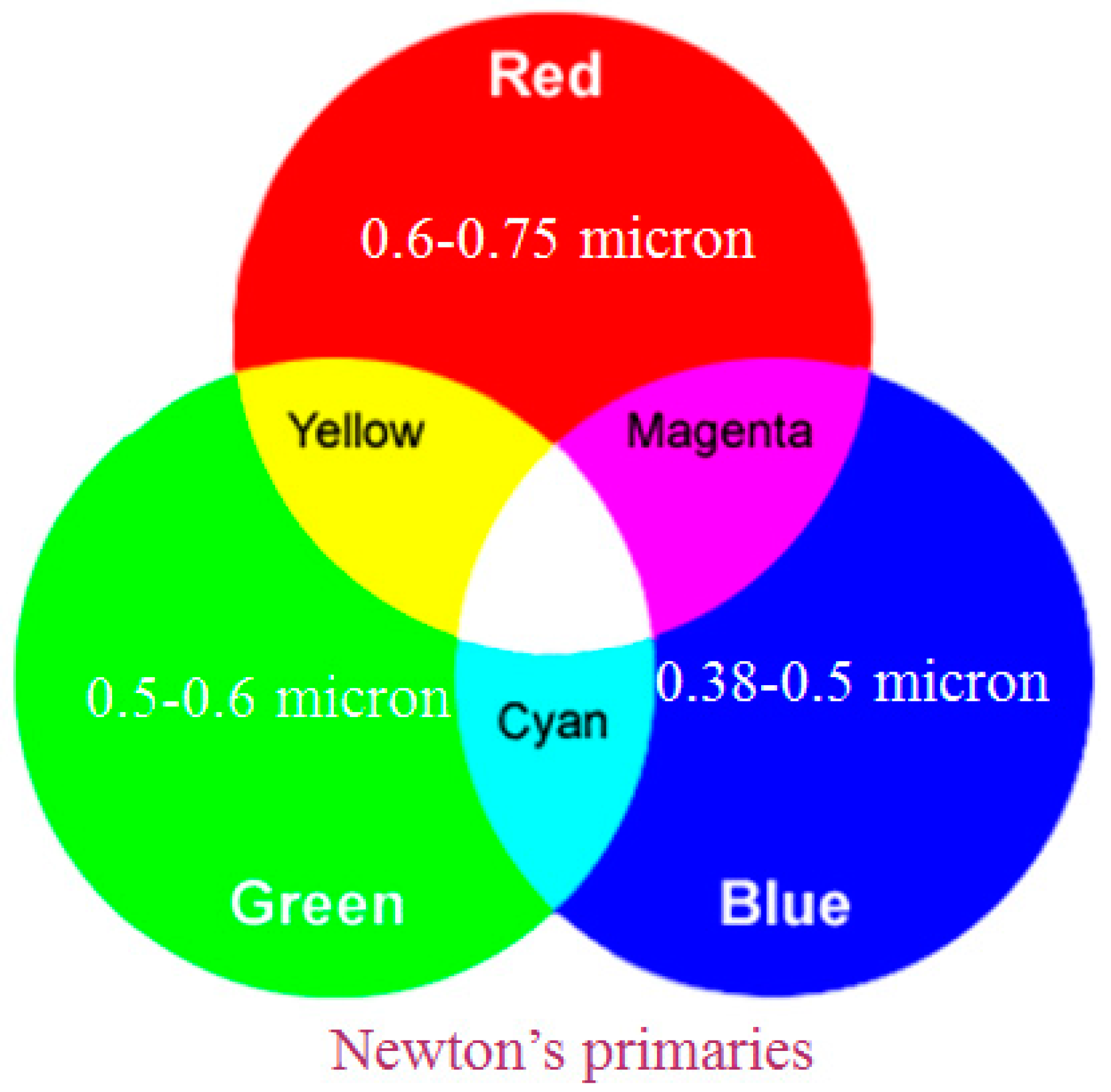
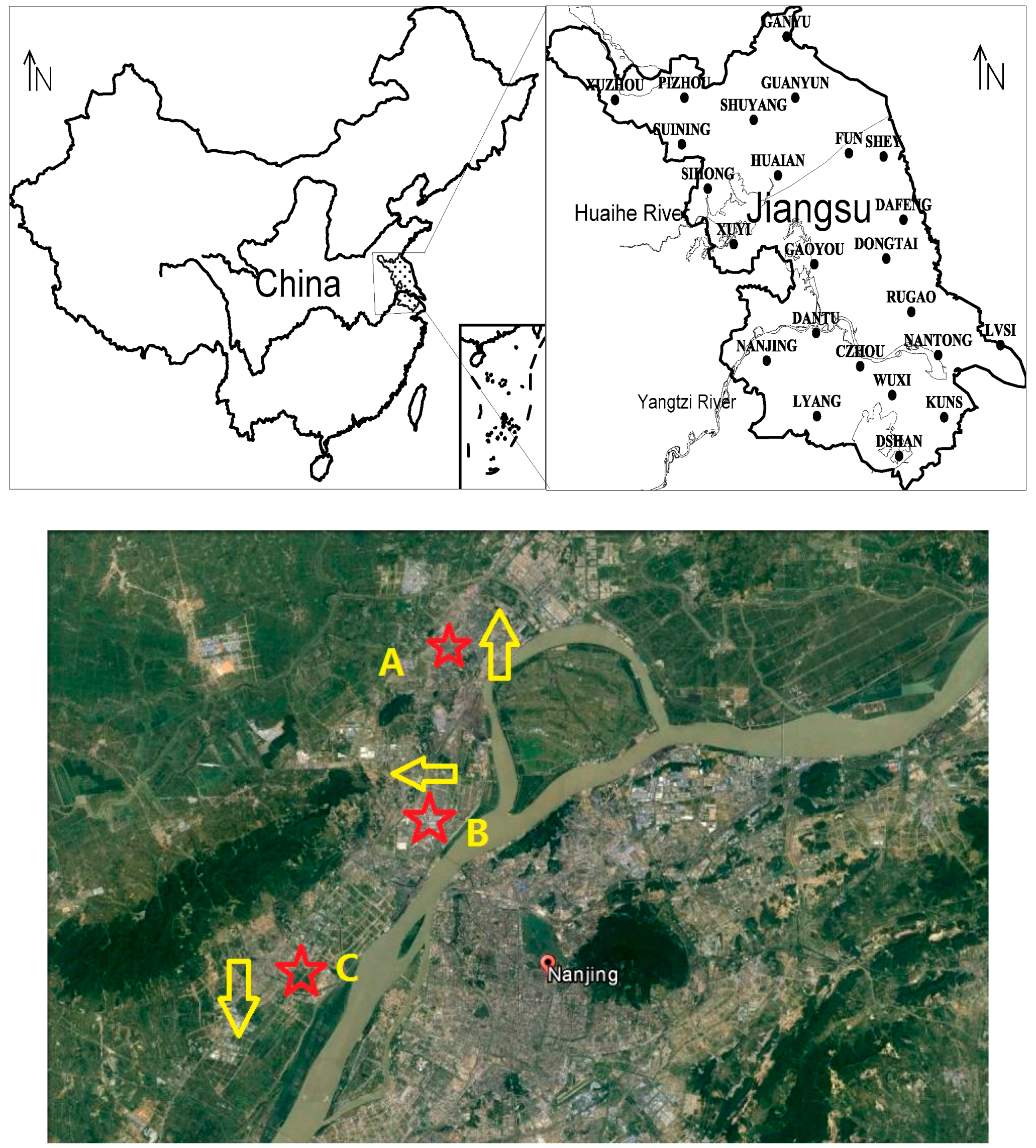
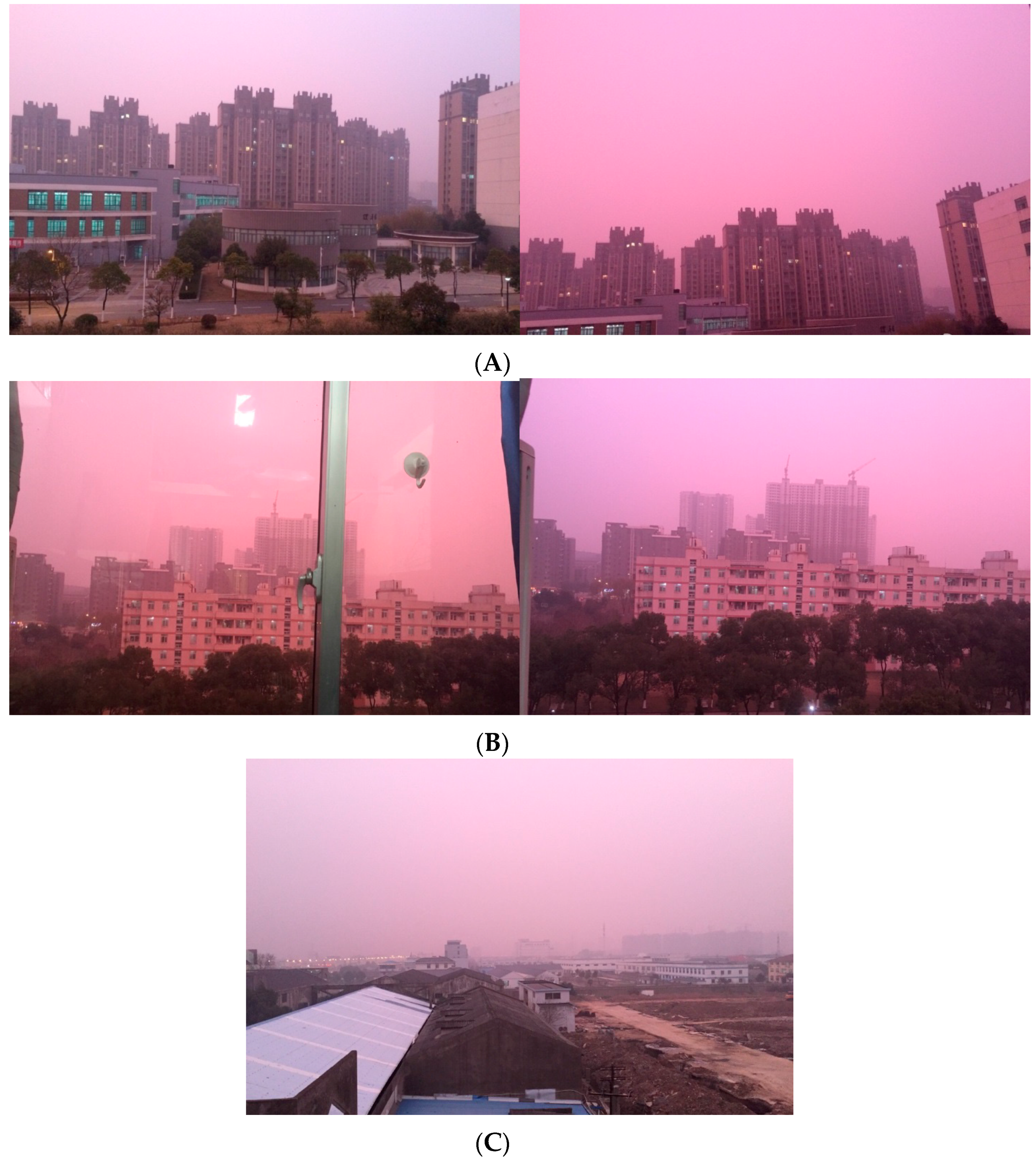
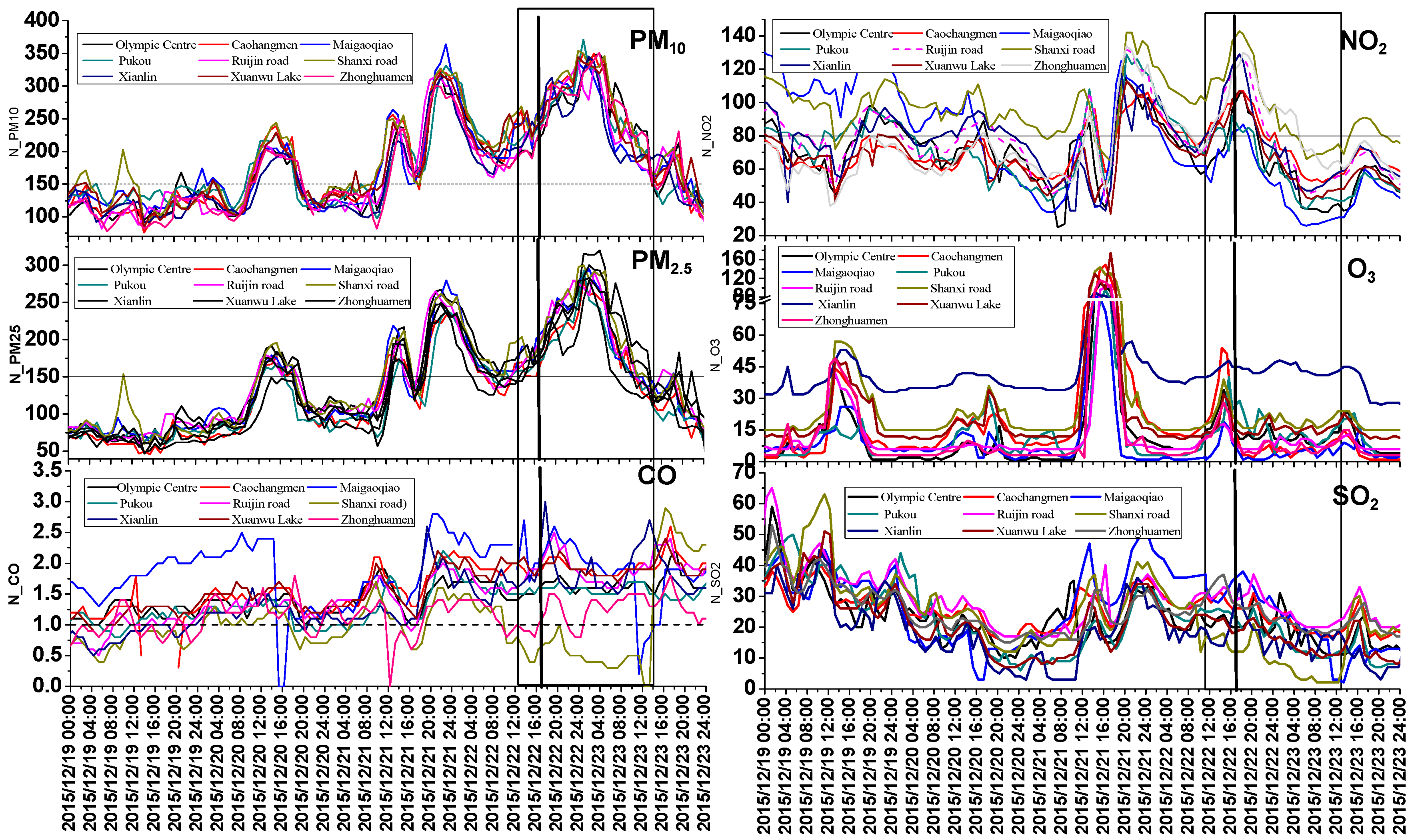
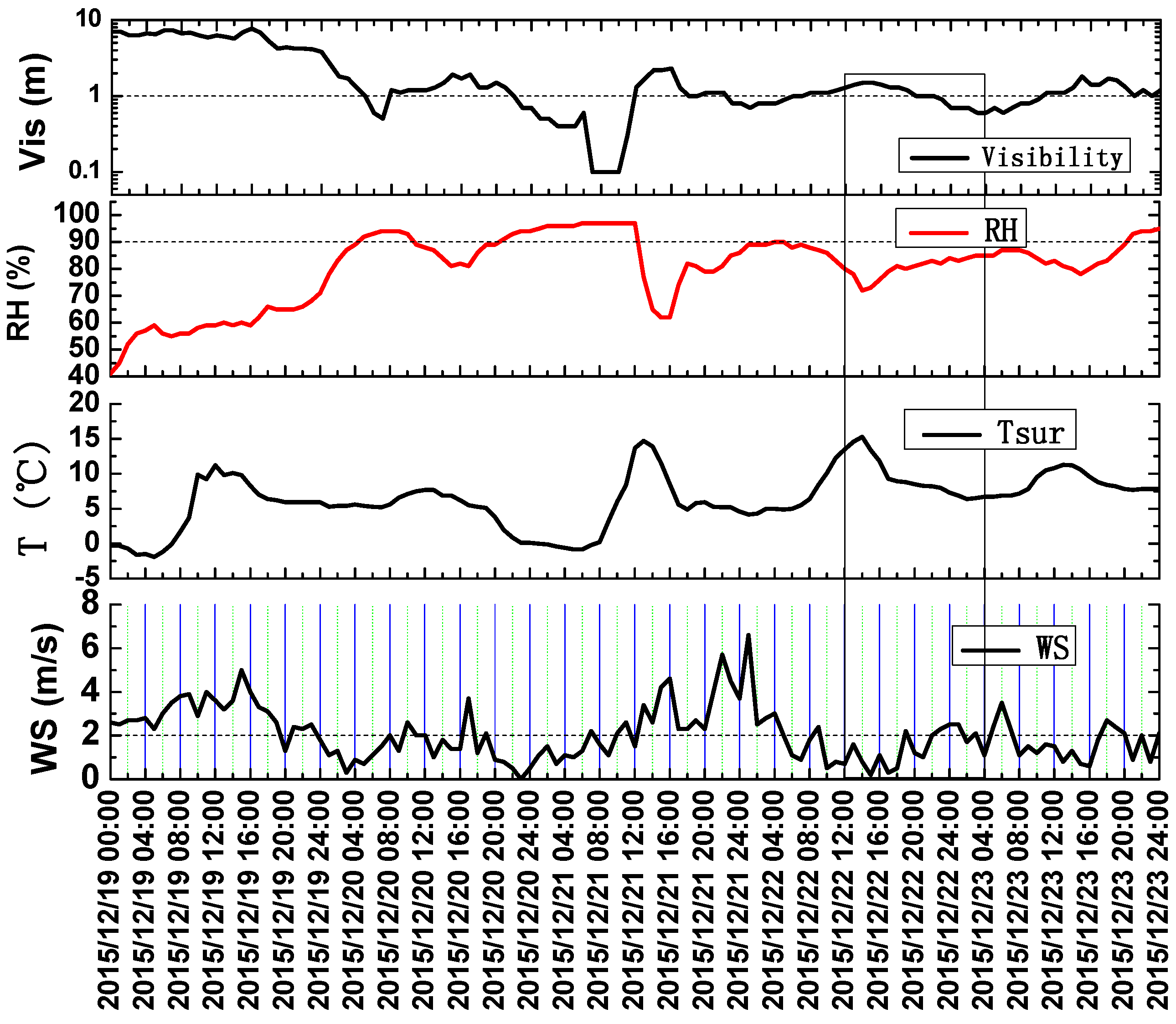




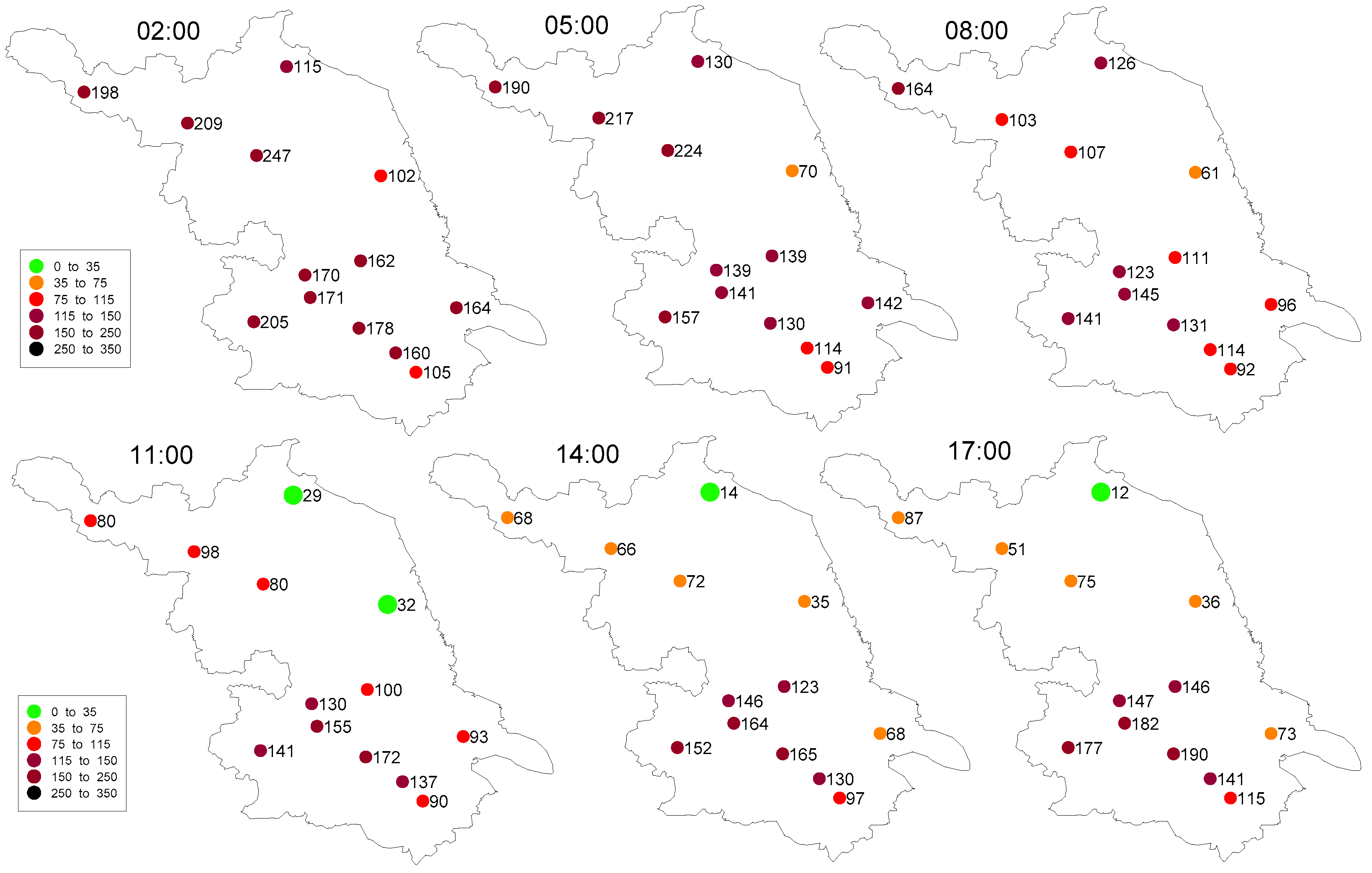
| Stations | PM2.5 | PM10 | SO2 | NO2 | O3 | CO |
|---|---|---|---|---|---|---|
| Unit | µg/m3 | mg/m3 | ||||
| Olympic Center | 205 | 246 | 20 | 107 | 11 | 1.7 |
| Caochangmen | 192 | 293 | 26 | 107 | 3 | 2.1 |
| Maigaoqiao | 251 | 304 | 29 | 61 | 1 | 2.3 |
| Pukou | 199 | 274 | 22 | 85 | 16 | 1.6 |
| Ruijin road | 253 | 299 | 31 | 121 | 6 | 2.5 |
| Shanxi road | 251 | 309 | 21 | 129 | 16 | 1.0 |
| Xianlin | 220 | 302 | 26 | 125 | 44 | 2.4 |
| Xuanwu lake | 207 | 277 | 19 | 106 | 13 | 2.0 |
| Zhonghuamen | 188 | 239 | 26 | 130 | 4 | 1.5 |
| Meteorological Elements | WS | WD | T2m | Tsurface | Td | RH | Total Cloud Cover | Low Cloud Cover | Visibility |
|---|---|---|---|---|---|---|---|---|---|
| Unit | m/s | ° | °C | % | % | km | |||
| Jiangning | 0.3 | 315.0 | 10.0 | 9.3 | 6.5 | 79 | 10 | 0 | 1.3 |
| Liuhe | 1.3 | 292.5 | 9.2 | 8.5 | 6.3 | 82 | 10 | 0 | 1.1 |
| Pukou | 2.3 | 337.5 | 10.2 | 9.6 | 6.0 | 75 | 10 | 0 | 1.6 |
© 2017 by the authors. Licensee MDPI, Basel, Switzerland. This article is an open access article distributed under the terms and conditions of the Creative Commons Attribution (CC BY) license (http://creativecommons.org/licenses/by/4.0/).
Share and Cite
Liu, D.; Liu, X.; Wang, H.; Li, Y.; Kang, Z.; Cao, L.; Yu, X.; Chen, H. A New Type of Haze? The December 2015 Purple (Magenta) Haze Event in Nanjing, China. Atmosphere 2017, 8, 76. https://doi.org/10.3390/atmos8040076
Liu D, Liu X, Wang H, Li Y, Kang Z, Cao L, Yu X, Chen H. A New Type of Haze? The December 2015 Purple (Magenta) Haze Event in Nanjing, China. Atmosphere. 2017; 8(4):76. https://doi.org/10.3390/atmos8040076
Chicago/Turabian StyleLiu, Duanyang, Xuejun Liu, Hongbin Wang, Yi Li, Zhiming Kang, Lu Cao, Xingna Yu, and Hao Chen. 2017. "A New Type of Haze? The December 2015 Purple (Magenta) Haze Event in Nanjing, China" Atmosphere 8, no. 4: 76. https://doi.org/10.3390/atmos8040076
APA StyleLiu, D., Liu, X., Wang, H., Li, Y., Kang, Z., Cao, L., Yu, X., & Chen, H. (2017). A New Type of Haze? The December 2015 Purple (Magenta) Haze Event in Nanjing, China. Atmosphere, 8(4), 76. https://doi.org/10.3390/atmos8040076








